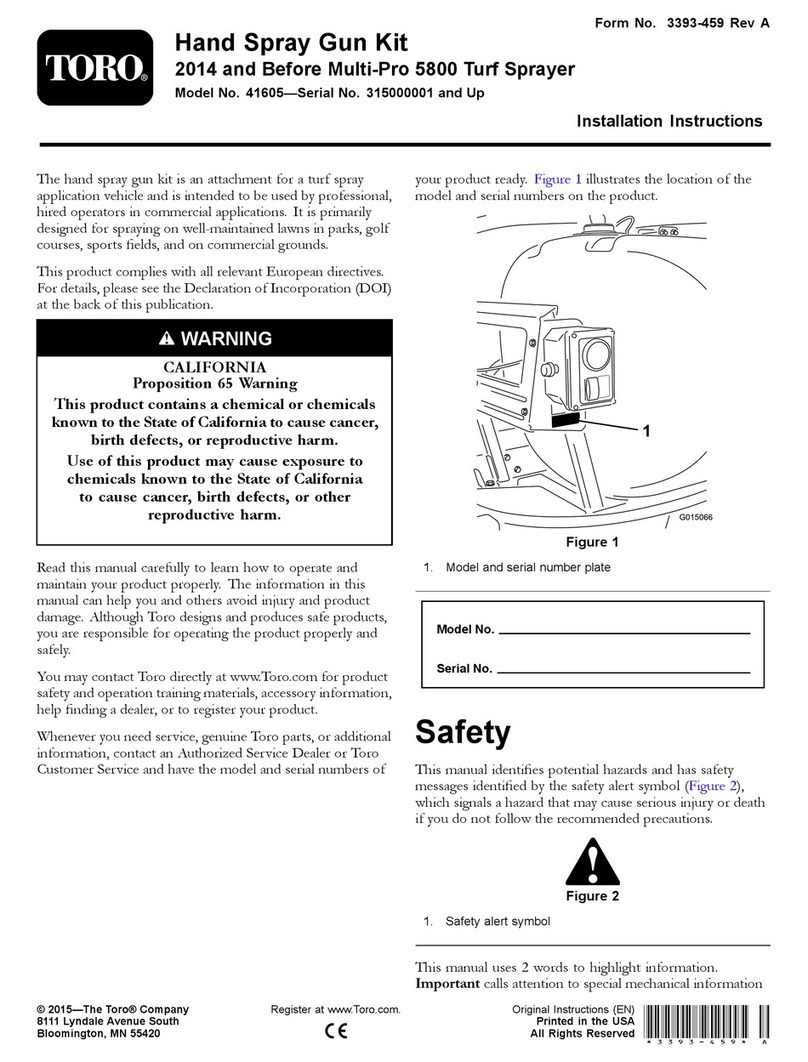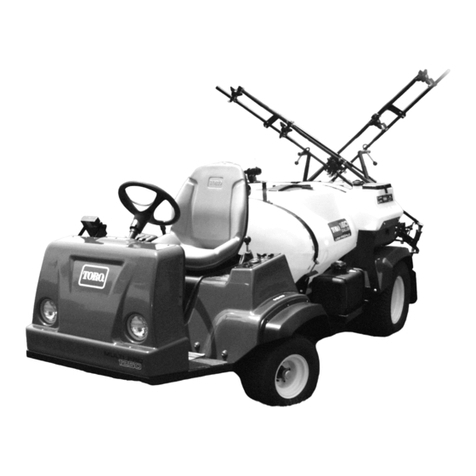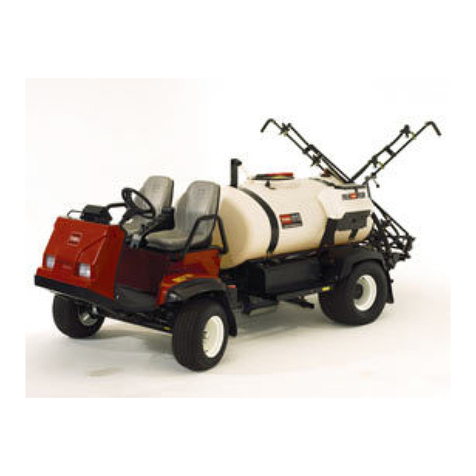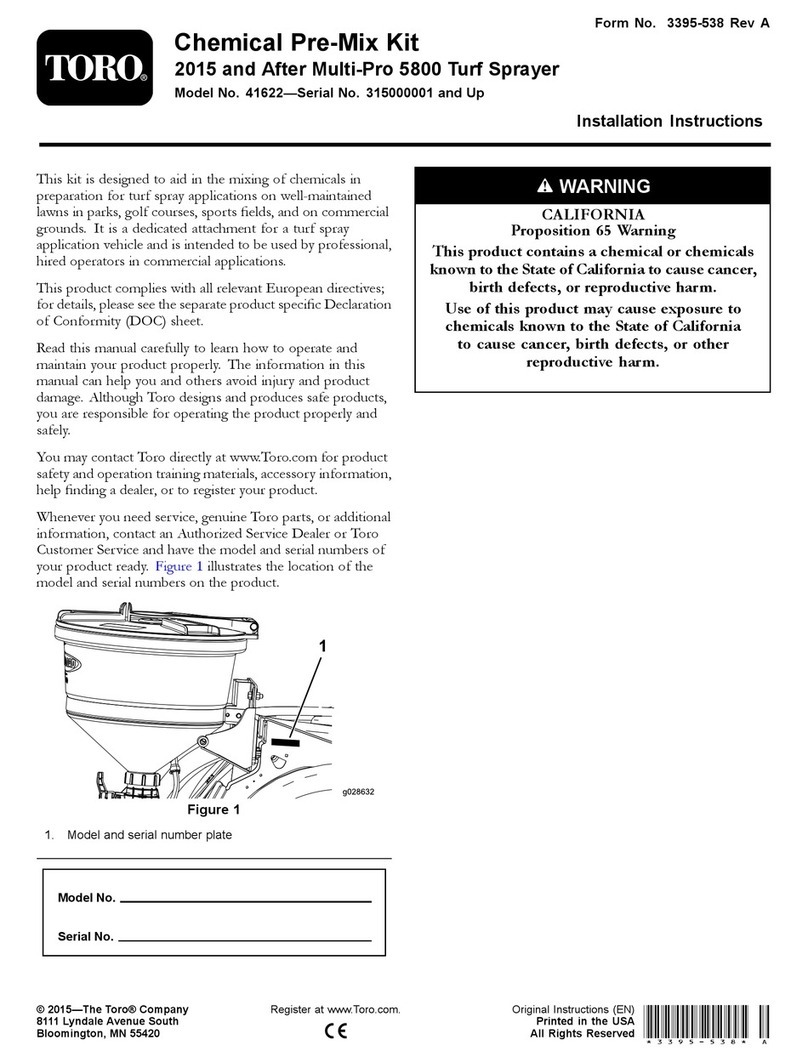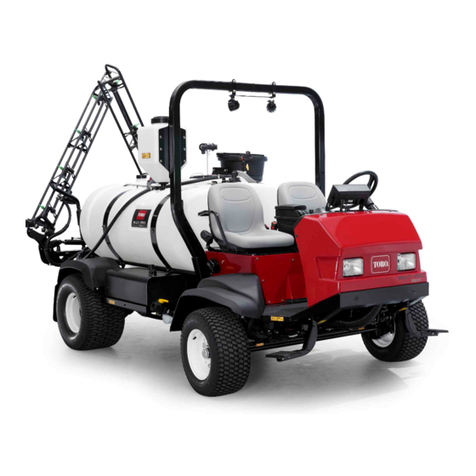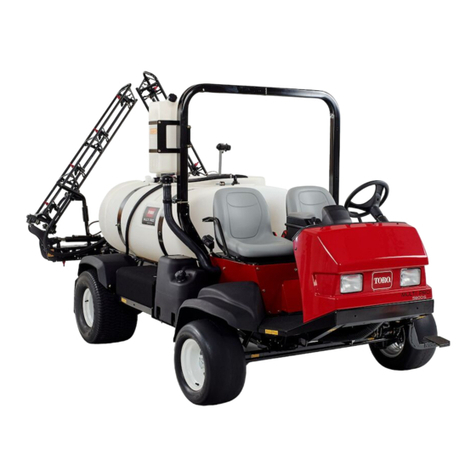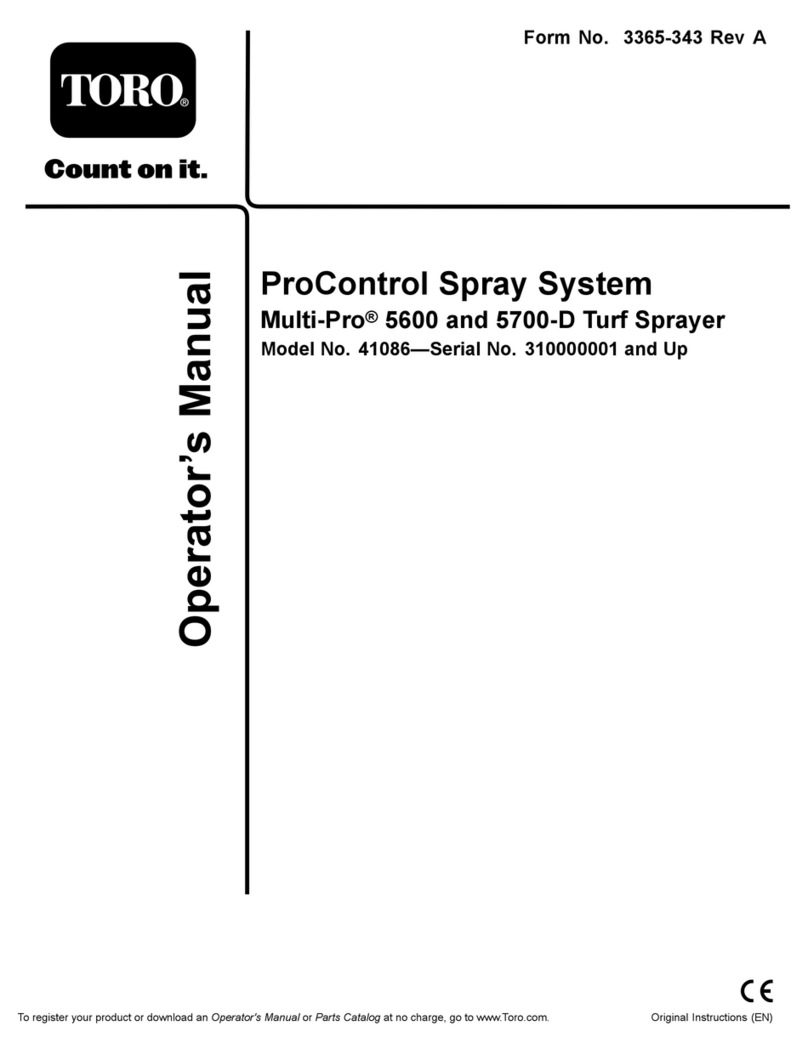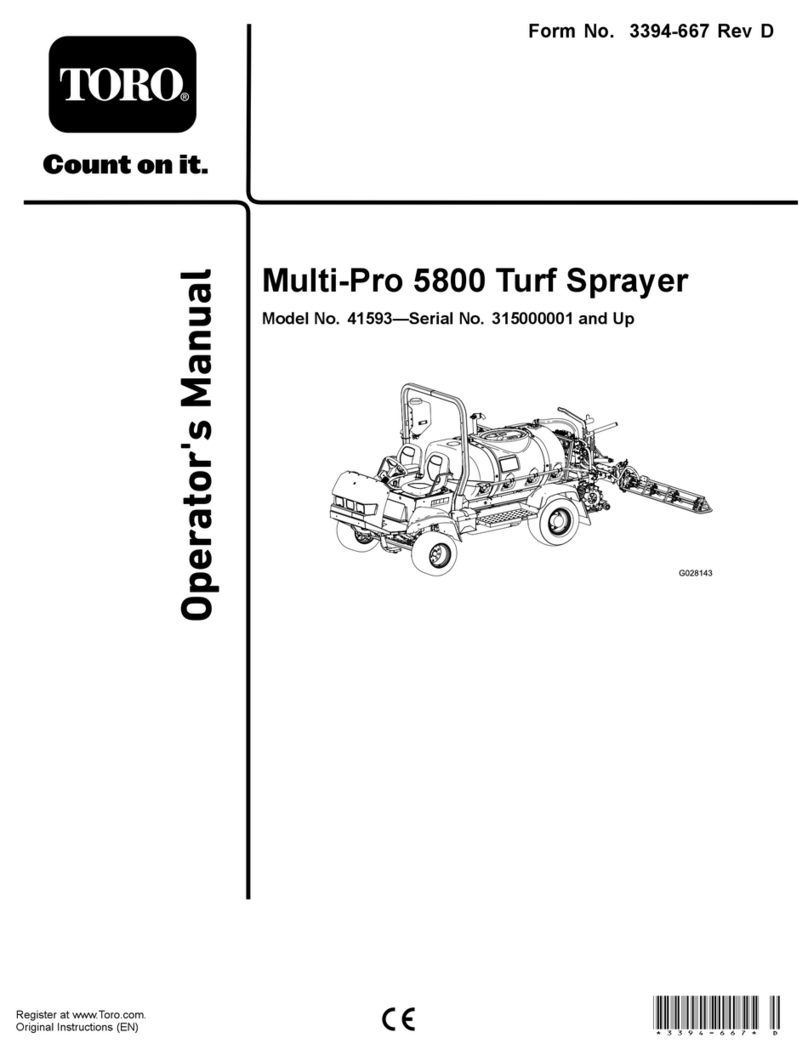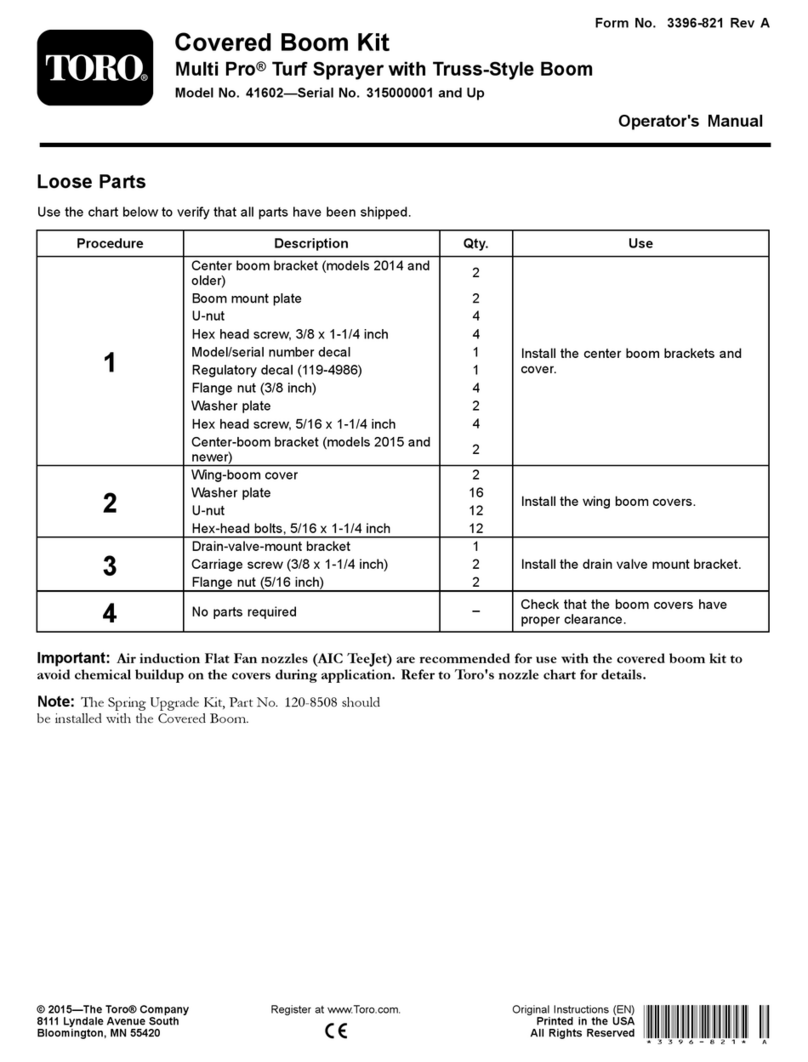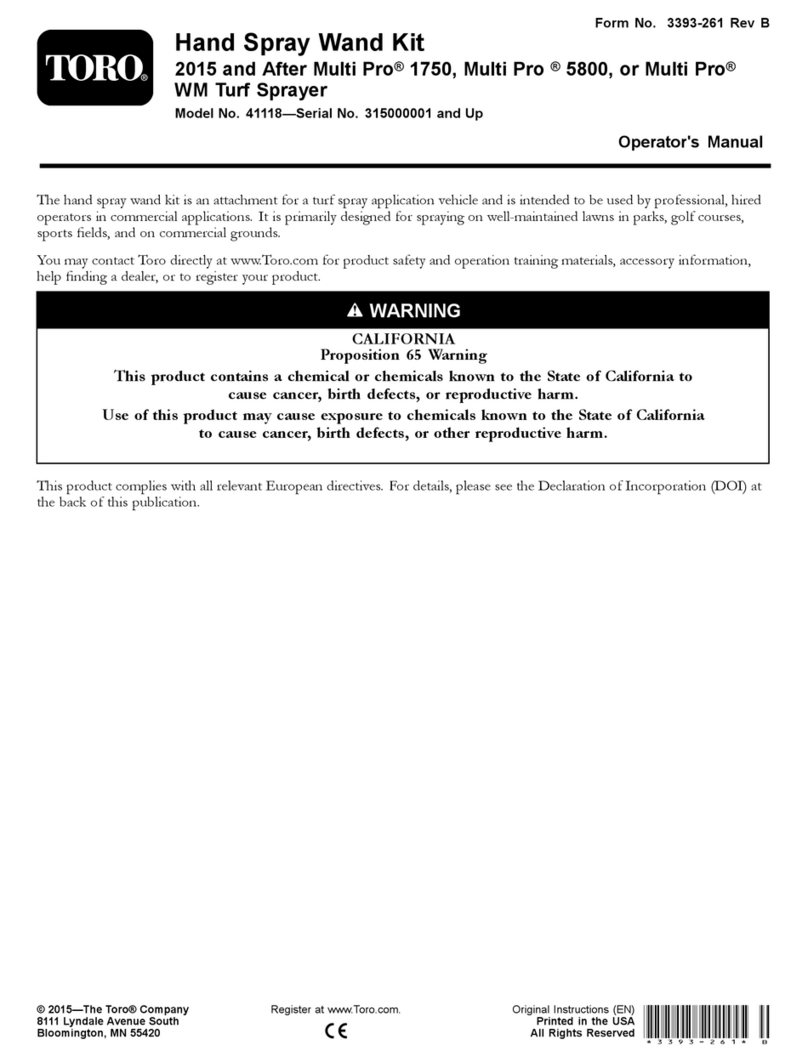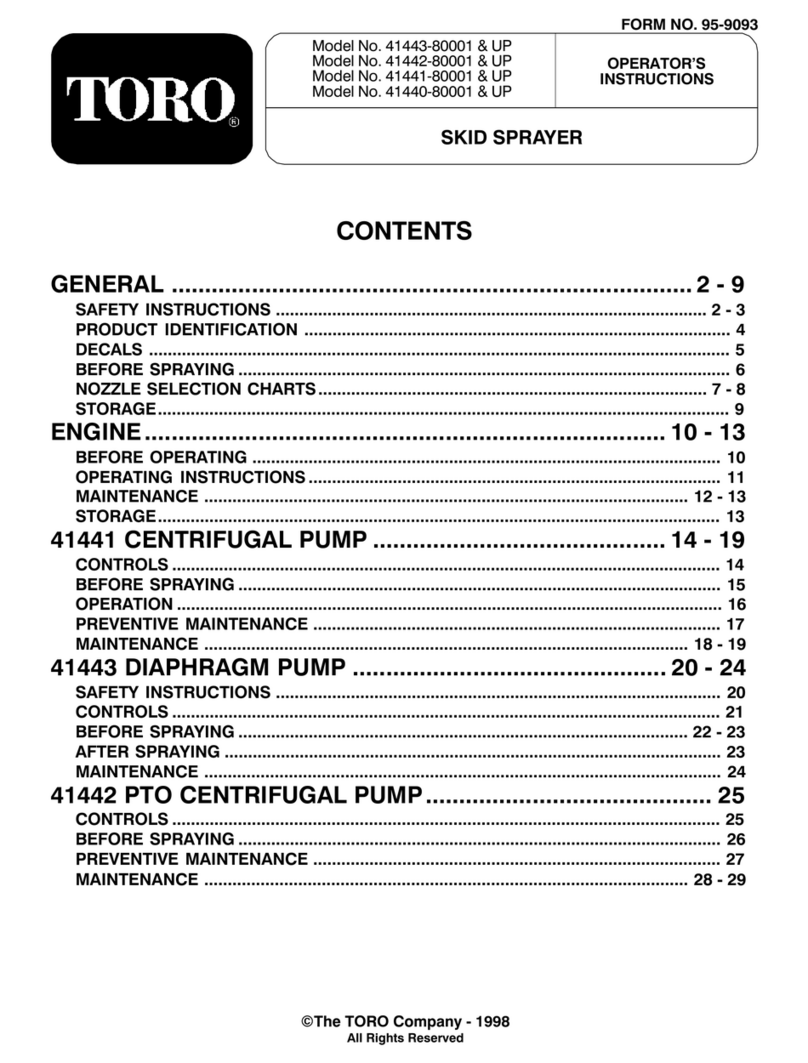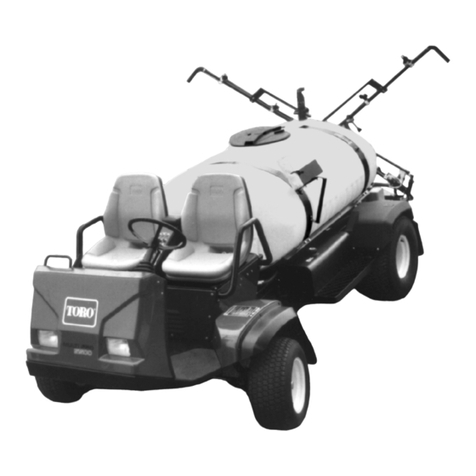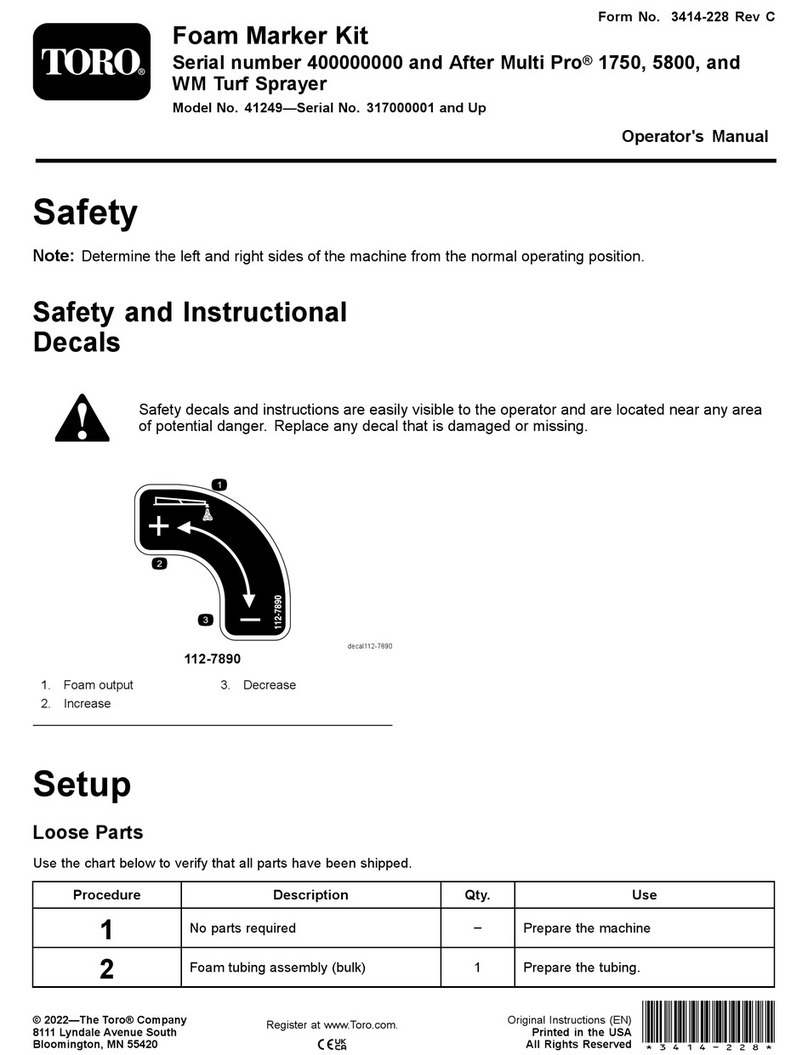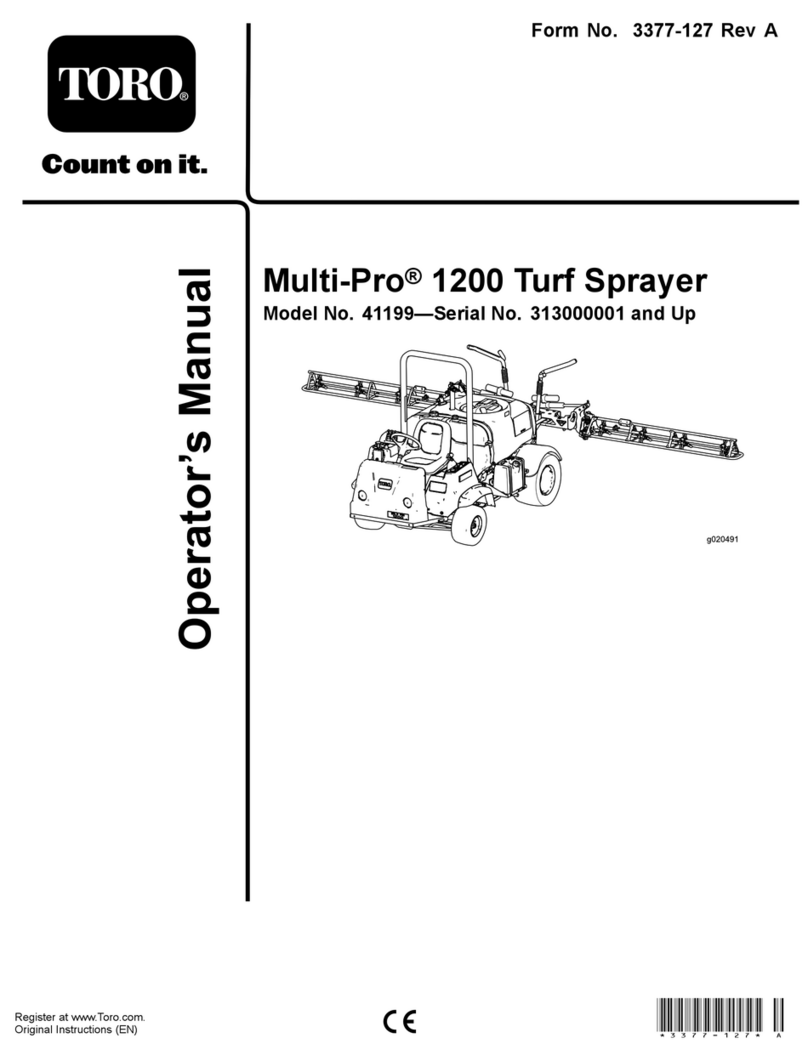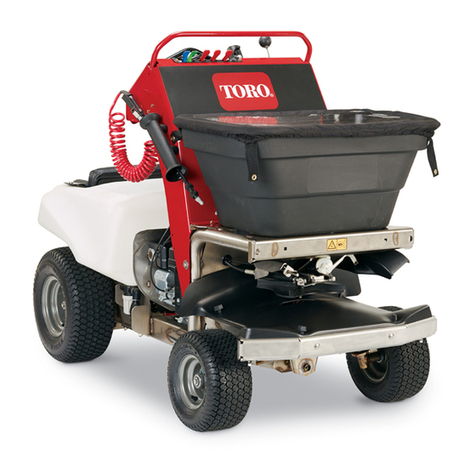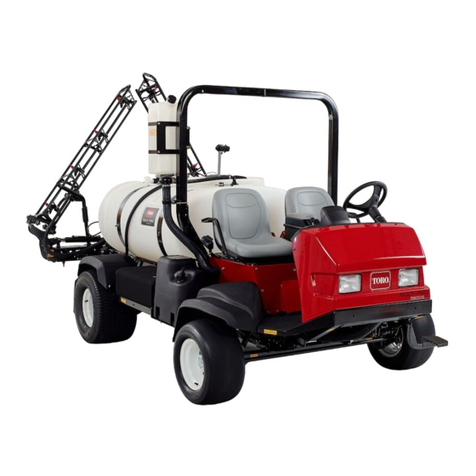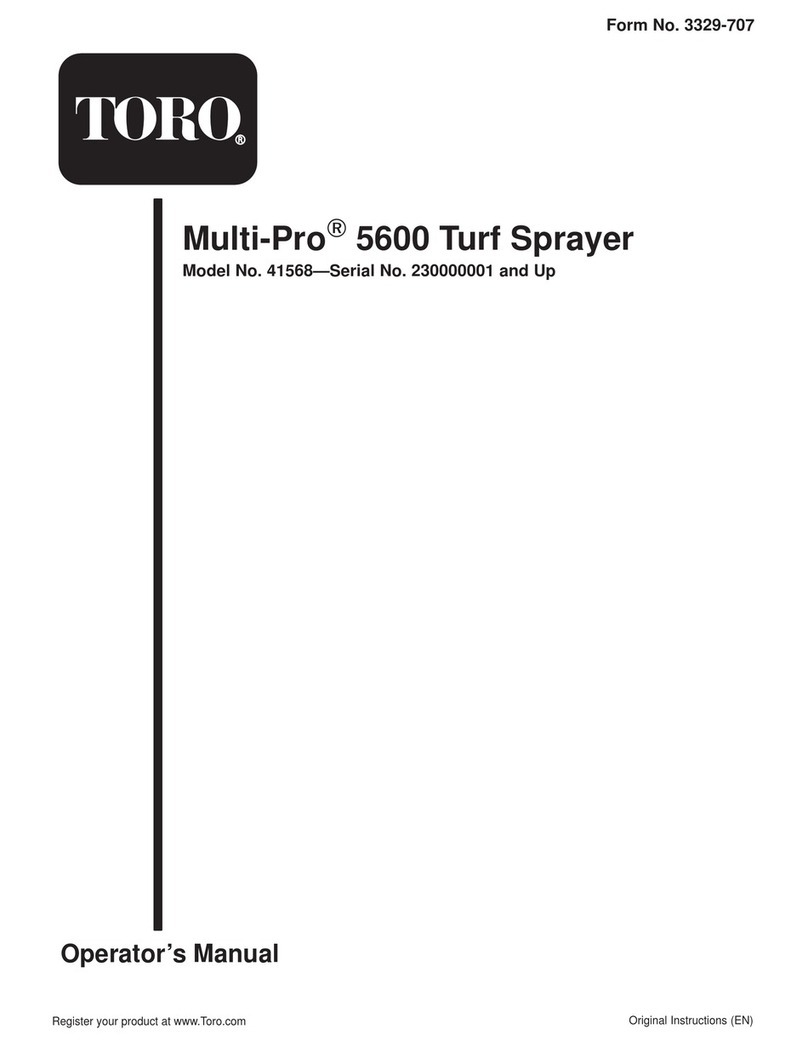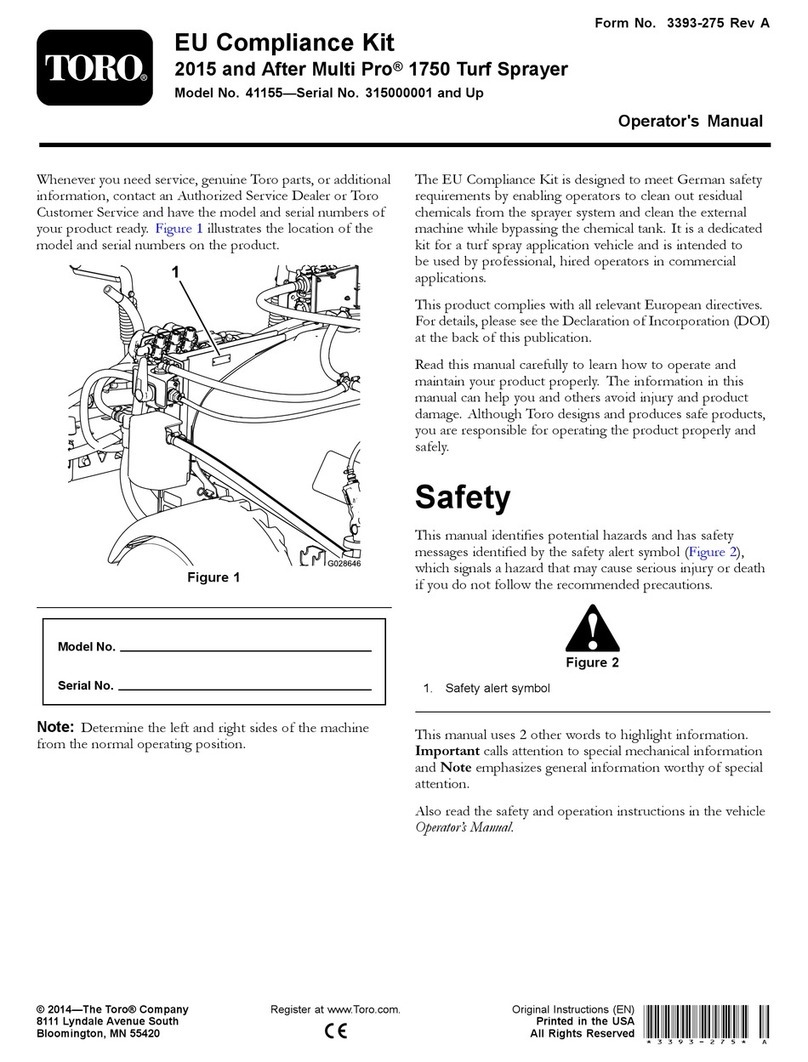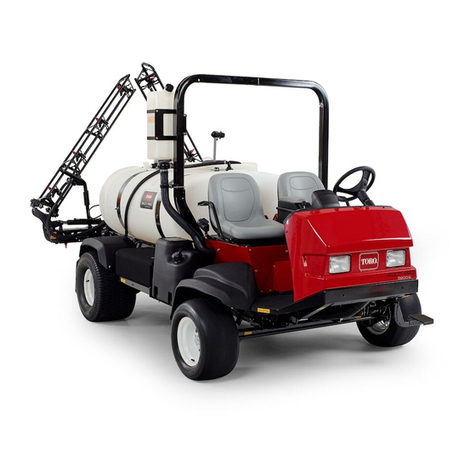
5
SAFETY INSTRUCTIONS
BEFORE OPERATING:
1. Operate the vehicle only after reading and
understanding the contents of this manual A
replacement manual is available by sending
complete model and serial number to: Hahn
Equipment Co., A subsidiary of The TORO
Company, 1625 N Garvin, Evansville, Indiana
47711-4596
Read and understand the Engine Manufacturer's
Operator's Manual Follow the safety alert
messages
1. Make sure operators are thoroughly trained
and familiar with the Operator's Manual and all
labels on the vehicle
2. Be sure to establish your own special
procedures and work rules for unusual operating
conditions (e g slopes too steep for vehicle
operation)
The MULTI PRO® 1200 Turf Sprayer was
designed and tested to offer safe servi e when
operated and maintained properly. Although
hazard ontrol and a ident prevention
partially are dependent upon the design and
onfiguration of the vehi le, these fa tors are
also dependent upon the awareness, on ern,
and proper training of the personnel involved
in the operation, maintenan e, and storage of
the vehi le. Improper use or maintenan e of
the vehi le an result in injury or death.
This is a spe ialized Turf Sprayer designed for
off road use. Its ride and handling will have a
different feel than what drivers experien e with
passenger ars or tru ks. So take time to
be ome familiar with your MULTI PRO® 1200.
The atta hments that adapt to the MULTI PRO®
1200 are not overed in this manual. See the
spe ifi Operator's Manual provided with the
atta hment for additional safety instru tions.
READ THESE MANUALS.
TO REDUCE THE POTENTIAL FOR INJURY
OR DEATH, COMPLY WITH THE FOLLOWING
SAFETY INSTRUCTIONS:
3. This vehicle is designed to carry Only You,
the Operator. Never carry passengers on the
vehicle
4. Never operate the vehicle when under the
influence of drugs or alcohol
5. Become familiar with the controls and know
how to stop the engine quickly
6. Keep all shields, safety devices, and decals
in place If a shield, safety device, or decal is
malfunctioning, illegible, or damaged, repair or
replace it before operating the vehicle
7. Always wear substantial shoes Do not
operate vehicle while wearing sandals, tennis
shoes, or sneakers Do not wear loose fitting
clothing or jewelry which could get caught in
moving parts and cause personal injury
8. Wearing safety glasses, safety shoes, long
pants, and a helmet is advisable and required by
some local safety and insurance regulations
9. Keep everyone, especially children and pets,
away from the areas of operation
10. Before operating the vehicle, always check
all parts of the vehicle and any attachments If
something is wrong, stop using the vehi le
Make sure the problem is corrected before vehicle
or attachment is operated again
11. Since gasoline is highly flammable, handle
it carefully
A. Use an approved gasoline container
B. Do not remove cap from fuel tank when
engine is hot or running
C. Do not smoke while handling gasoline
D. Fill fuel tank outdoors and to
approximately one inch below top of tank,
(bottom of filler neck) Do not overfill
E. Wipe up any spilled gasoline
12 Entering tank is prohibited Some spray
chemicals could be hazardous Entering tank
could increase exposure to hazardous chemicals
SUPERVISOR'S RESPONSIBILITIES:
2. Never allow children to operate the vehicle
or adults to operate it without proper instructions
Only trained and authorized persons should
operate this vehicle Anyone who operates the
vehicle should have a motor vehicle license
